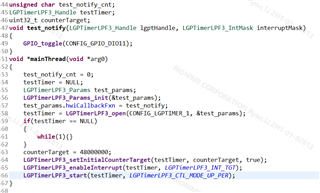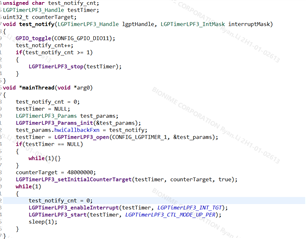I want to use LPGTimer , so I write the test code , and set counterTarget = 48M ( 1 s ),but It only enters TimerCallback() every second, but stays in TimerCallback() without jumping out ( 3 ~ 6 ms ).There is no timing effect
However, I set sleep() and LGPTimerLPF3_stop to enter TimerCallback every second.
So what is the function of setting CounterTarget? Isn’t it just using sleep(1) to set the timer?
PS.I use an oscilloscope to view the GPIO_toggle , and My SDK is 7_10_00_35


